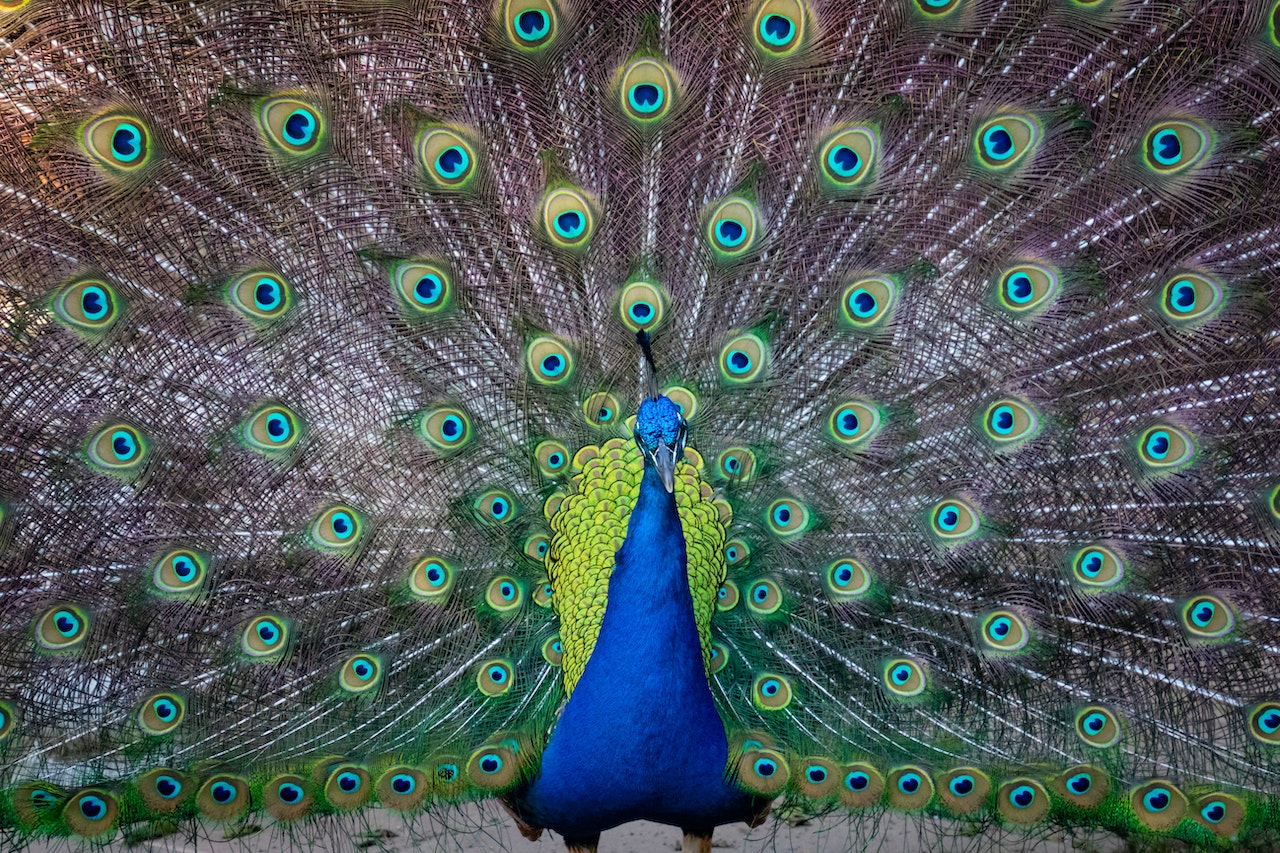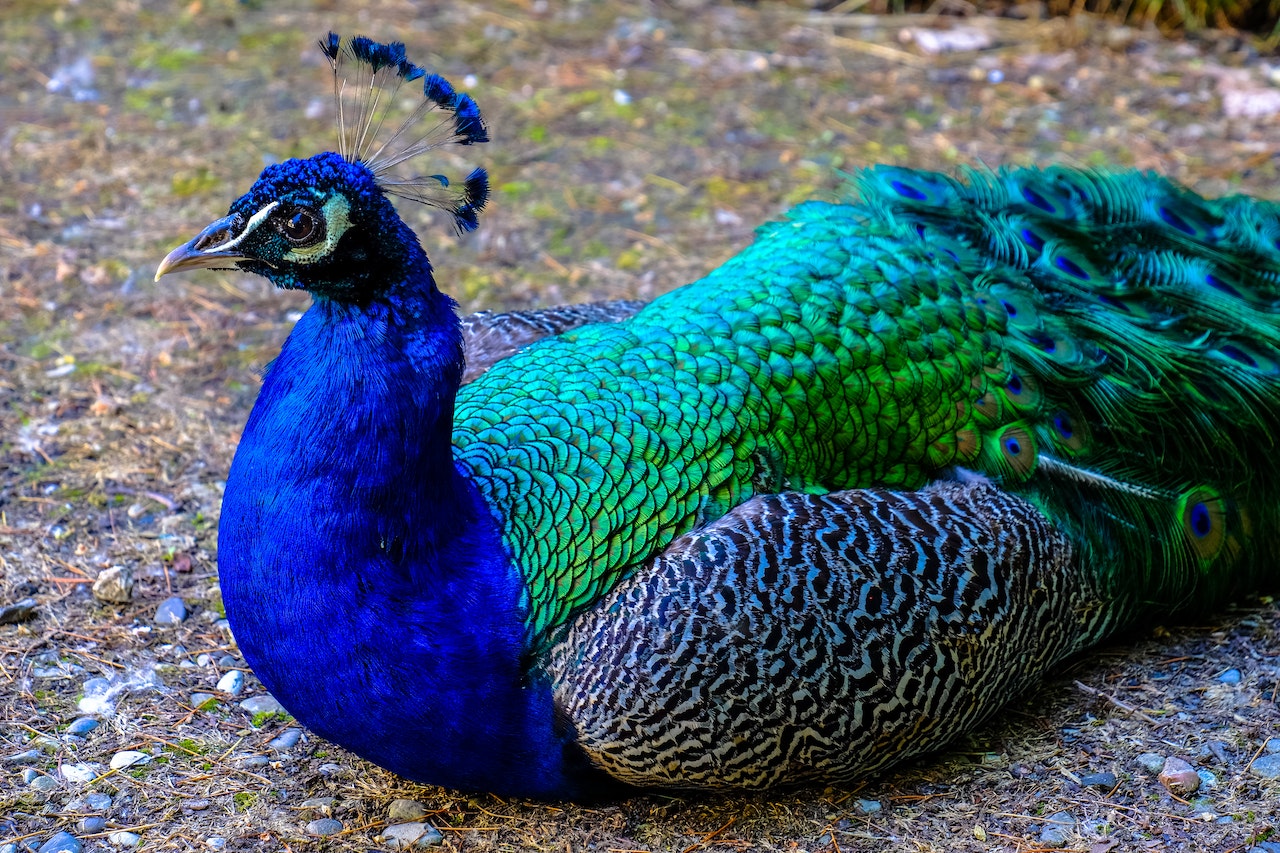Meaning Of A Peacock - A Symbol Of Beauty, Pride, And Spirituality
However, beyond their physical beauty, peacocks are also steeped in symbolism and cultural significance. In this article, we will explore the various symbolism and meaning of a peacock.
Author:Suleman ShahReviewer:Han JuMay 31, 202334.5K Shares460K Views

Peacocks are known for their strikingly beautiful feathers and graceful demeanor. They are a common sight in gardens, zoos, and nature reserves all around the world.
However, beyond their physical beauty, peacocks are also steeped in symbolism and cultural significance. In this article, we will explore the various symbolism and meaning of a peacock.
Meaning Of A Peacock In Beauty
Peacocks are admired for their physical beauty, particularly their colorful and iridescent feathers. The peacock's feathers, known as a "train," are composed of long, flowing feathers that fan out in a magnificent display.
These feathers are a source of wonder and inspiration for artists and designers and have been used to create stunning works of art and fashion.
The beauty of a peacock is not limited to its physical appearance, however. Peacocks are also admired for their grace and elegance. They move with a fluidity and poise that is both mesmerizing and calming.
The peacock, with its striking plumage and regal bearing, has been revered throughout historyas a symbol of beauty, grace, and abundance.
From its origins in India to its widespread presence in cultures across the globe, the peacock has captivated the imaginations of people for centuries.
The peacock is also often associated with pride and vanity, as its beautiful plumage was seen as a sign of arrogance and self-importance.
The Symbolism Of A Peacock
Beyond their physical beauty, peacocks are also rich in symbolism and cultural significance. Here are some of the most common meanings associated with peacocks.
- Pride and Vanity - Peacocks are often associated with pride and vanity, particularly in Western culture. This is because of their regal and ostentatious display of feathers, which can be seen as an exaggerated display of self-importance. In this context, the peacock is seen as a warning against the dangers of excessive pride and vanity.
- Spiritualityand Enlightenment- Peacocks are also rich in symbolism in many Eastern cultures. In Hinduism, for example, the peacock is associated with the goddess Saraswati, who is the patron of knowledge, music, and the arts. In Buddhism, the peacock is a symbol of purity, enlightenment, and the ability to transform negative emotions into positive ones.
- Beauty and Creativity - Peacocks are often associated with beauty and creativity, particularly in the arts. This is because of their inspiration to artists and designers throughout history. From ancient Egyptian and Greek art to modern fashion and design, peacocks have been a popular motif for centuries.
- Royalty and Nobility - Peacocks are often associated with royalty and nobility because of their regal appearance. In ancient times, peacock feathers were used as a symbol of royalty and were often used in the decoration of royal palaces and clothing.
The Peacock In Mythology And Religion
The peacock has been a symbol of beauty, divinity, and royalty in many cultures throughout history. In mythology and religion, the peacock has been associated with various deities and symbolic meanings.
- Hinduism- In Hindu mythology, the peacock is associated with the god of thunder and rain, Indra. It is believed that the peacock was once a celestial bird with magnificent feathers that Indra transformed into a bird to serve as his mount. The peacock's association with Indra has made it a symbol of immortality, regal splendor, and spiritual awakening.
- Christianity- In Christianity, the peacock is a symbol of resurrection and eternal life. The peacock's feathers are believed to symbolize the "all-seeing" church, and its flesh was believed to be incorruptible. It was also believed that the peacock's cry sounded like a hymn of praise, which further cemented its association with divinity.
- Greek Mythology - In Greek mythology, the peacock was associated with the goddess Hera, who was often depicted wearing a peacock feather headdress. The peacock was also believed to have been created by Hera herself. According to one myth, the peacock was created from the hundred eyes of the giant Argus, who was killed by the god Hermes.
- Buddhism - In Buddhism, the peacock is a symbol of purity, enlightenment, and spiritual renewal. It is believed that the peacock's ability to eat poisonous plants without being harmed symbolizes the Buddhist's ability to transmute negative experiences into wisdom and compassion.
- Islam- In Islamic mythology, the peacock is associated with the bird of paradise. It is believed that the peacock's magnificent feathers are a reminder of the beauty and splendor of the afterlife.
- Judaism - In Jewish culture, the peacock is a symbol of resurrection and immortality. It is believed that the peacock's feathers represent the "eyes of God," and that they are a symbol of the divine presence watching over humanity.
The peacock's association with various religious and mythological figures has cemented its place in human culture as a symbol of divinity, beauty, and spiritual awakening. It is a testament to the enduring power of this magnificent bird that its symbolism continues to inspire people to this day.

The Meaning of the Peacock Symbol in Christianity
The Peacock In Art And Design
The peacock's stunning beauty and distinctive features have inspired artists and designers for centuries. From ancient times to modern art, the peacock's feathers and regal appearance have been a popular subject for creative expression and design.
- Ancient Art - In ancient Greece and Rome, the peacock was a popular motif in art and design. It was often depicted in mosaics, pottery, and sculpture, symbolizing beauty, wealth, and power. The peacock's distinctive feathers were a favorite subject for artists, and they were often depicted in intricate patterns and designs.
- Medieval Art- During the Middle Ages, the peacock continued to be a popular motif in art and design. In Christian art, the peacock was often depicted as a symbol of the resurrection and eternal life, and its feathers were used to adorn religious manuscripts, altars, and vestments. The peacock was also a popular symbol in Islamic art, where it was associated with paradise and the afterlife.
- Renaissance Art- In the Renaissance, the peacock's beauty and splendor were celebrated in art and design. The peacock's feathers were used to decorate clothing, furniture, and accessories, and they were often depicted in paintings and sculptures. Renaissance artists such as Leonardo da Vinci and Raphael were known for their exquisite depictions of peacocks in their artworks.
- Modern Art- In modern art, the peacock continues to be a popular subject for artists. Its vibrant colors and distinctive feathers have inspired artists to create works that capture the peacock's beauty and grace. The peacock's feathers have also been used in fashion and interior design, adding a touch of glamour and luxury to clothing, jewelry, and home decor.
- Peacock in Design- The peacock's distinctive features have also inspired designers to create products that reflect its beauty and elegance. From textiles and wallpaper to furniture and home accessories, the peacock's feathers have been used in a variety of design applications. In fashion, the peacock's feathers have been used to create stunning evening gowns, headpieces, and accessories, adding a touch of glamour and sophistication to any outfit.
The peacock's beauty and distinctive features have made it a popular subject for artists and designers throughout history. Its vibrant colors, intricate patterns, and graceful appearance continue to inspire creativity and innovation in the world of art and design.
People Also Ask
What Does The Peacock Represent In Hinduism?
In Hinduism, the peacock is associated with the god Kartikeya and represents beauty, knowledge, and enlightenment.
What Does The Peacock Symbolize In Chinese Culture?
In Chinese culture, the peacock is a symbol of dignity, beauty, and immortality.
What Is The Peacock's Symbolism In Christian Art?
In Christian art, the peacock is a symbol of the resurrection and eternal life.
How Is The Peacock Used In Feng Shui?
In feng shui, the peacock's feathers are believed to bring good luck, prosperity, and protection.
What Does The Peacock Symbolize In Native American Culture?
In Native American culture, the peacock is a symbol of spiritual protection, guidance, and beauty.
Conclusion
The peacock is a beautiful and majestic bird with rich cultural symbolism and meaning. From its associations with royalty and divinity in ancient civilizations to its use in art and design throughout history, the peacock has been an enduring symbol of beauty, power, and spiritual enlightenment.
Whether in mythology, religion, art, or nature, the meaning of a peacock continues to captivate and inspire people around the world.

Suleman Shah
Author
Suleman Shah is a researcher and freelance writer. As a researcher, he has worked with MNS University of Agriculture, Multan (Pakistan) and Texas A & M University (USA). He regularly writes science articles and blogs for science news website immersse.com and open access publishers OA Publishing London and Scientific Times. He loves to keep himself updated on scientific developments and convert these developments into everyday language to update the readers about the developments in the scientific era. His primary research focus is Plant sciences, and he contributed to this field by publishing his research in scientific journals and presenting his work at many Conferences.
Shah graduated from the University of Agriculture Faisalabad (Pakistan) and started his professional carrier with Jaffer Agro Services and later with the Agriculture Department of the Government of Pakistan. His research interest compelled and attracted him to proceed with his carrier in Plant sciences research. So, he started his Ph.D. in Soil Science at MNS University of Agriculture Multan (Pakistan). Later, he started working as a visiting scholar with Texas A&M University (USA).
Shah’s experience with big Open Excess publishers like Springers, Frontiers, MDPI, etc., testified to his belief in Open Access as a barrier-removing mechanism between researchers and the readers of their research. Shah believes that Open Access is revolutionizing the publication process and benefitting research in all fields.

Han Ju
Reviewer
Hello! I'm Han Ju, the heart behind World Wide Journals. My life is a unique tapestry woven from the threads of news, spirituality, and science, enriched by melodies from my guitar. Raised amidst tales of the ancient and the arcane, I developed a keen eye for the stories that truly matter. Through my work, I seek to bridge the seen with the unseen, marrying the rigor of science with the depth of spirituality.
Each article at World Wide Journals is a piece of this ongoing quest, blending analysis with personal reflection. Whether exploring quantum frontiers or strumming chords under the stars, my aim is to inspire and provoke thought, inviting you into a world where every discovery is a note in the grand symphony of existence.
Welcome aboard this journey of insight and exploration, where curiosity leads and music guides.
Latest Articles
Popular Articles
